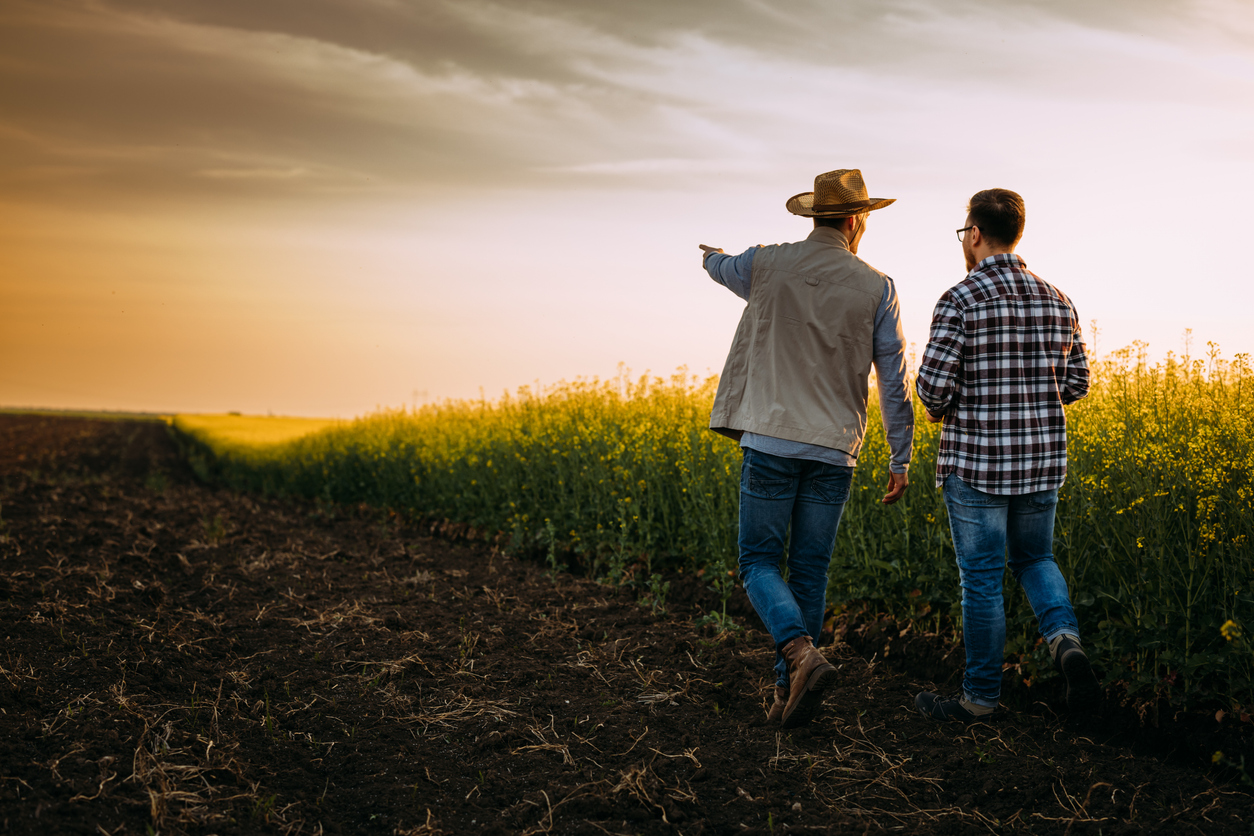Todd Robran is the chief commercial officer at Growers Edge. Growers Edge provides modern financial products and data-driven tools that help forward-thinking agriculture retailers, manufacturers, and lenders promote the adoption of innovative solutions and practices by reducing growers’ risks and costs.
Agricultural sustainability as a concept is largely unobjectionable. But the word ‘sustainability’ means different things to different people. For policymakers, it often relates specifically to regenerative farming practices and climate change goals. For many farmers, however, it can mean anything from being financially able to plant a crop next year to running the farm in a way that mitigates climate change.
Ultimately, we all want sustainable farms: farming practices that support farmers’ families year to year that nourish the land and that drive the economy.
However, given the unique context and experiences that agricultural professionals bring to the conversation, I suggest we adopt a different word: not sustainability, but stewardship. Here, I’ll lay out my reasoning and explore how a vision of stewardship can help get everyone on the same page.
Farmers are the original stewards of the land
Farmers are familiar with the concept of stewardship. It encompasses land management, farming with an eye to both household finances and the larger economy, and operating the farm in the larger environmental context.
Farmers have always balanced these interrelated concerns. Too often, though, conversations about sustainability – especially those that don’t include farmers – focus only on specific farming practices without acknowledging the many other considerations farmers juggle in a given season. Because of that, efforts to promote more sustainable crop inputs or farming practices often fail – but they don’t have to.
The key to driving widespread adoption of more sustainable products and practices is to address the full picture of stewardship. In other words, if we want farmers to embrace more sustainable farming techniques and crop inputs, we need to make sure those techniques and inputs are economically viable for the farmers, that they contribute to the long-term health of the land, and that they add to the value of the farm as an asset.
To do that, we need the collaboration of other ecosystem players – we can’t expect farmers to carry the burden by themselves.
Trusted advisors can guide farmers’ adoption of sustainable products and practices
Among those players are trusted advisors – often agronomists farmers consult via their preferred retailers. Their expertise can be crucial in guiding farmers toward the best products for their specific conditions.
In any given season, a farmer might be bombarded with dozens of new products promising fractional yield increases; some portion of them also promise increased sustainability. Choosing which to use can be a daunting task, not least because any new product may require new investment, application methods, or production practices.
This is where agronomists can shine. Not only can they offer deep product knowledge, they can also recommend full-acre prescriptions specific to a farmer’s actual land.
Beyond recommending products from the dizzying array available, agronomists can also help farmers see the bigger picture: what are the current standards for ethanol or sustainable aviation fuel crops? How might these products impact carbon intensity, and what’s the current incentive for lowering your score? How many years will it take before a field adapts to new practices? How much will yield be impacted in the meantime?
By guiding farmers through these big-picture considerations, agronomists effectively share the cognitive burden of adopting more sustainable farming practices.
Retailers and manufacturers can help reduce the financial risk
Even with a rock-solid understanding of the potential short- and long-term benefits of adopting various sustainable practices and crop inputs, though, many farmers are reluctant to try new solutions. One big reason why is the psychological phenomenon known as loss aversion.
Thanks to loss aversion, people are often more motivated to avoid a potential loss than we are to enjoy a potential gain. Getting farmers over this barrier is tricky; even when they’re on board with the theory of a new solution, they may still hesitate to try it.
This is where retailers and manufacturers can come in to share the economic risk with farmers via financial products.
For example, a warranty can be an excellent tool to convince farmers to take the final leap in embracing a new, more sustainable production practice. It can be structured so that, to be eligible for payout in the event of yield shortfall, a farmer has to adhere to certain practices – i.e., the practices best suited to the new crop input or production practice.
That provision has both the short-term impact of ensuring farmers follow proper protocol with new inputs, the mid-term impact of ensuring they don’t lose money because of trying a new input, and the long-term impact of helping farmers learn more sustainable farming practices.
Both retailers and manufacturers can sponsor warranties to help drive adoption of more sustainable products.
Stewardship is complex. Sustainability is just one part of it
Farmers don’t have the luxury of “moving fast and breaking things.” Instead, they have to take a holistic approach to operations, balancing profitability, land management, and environmental impact.
Because better stewardship of farmland benefits all of us, it is incumbent on everyone in the ecosystem to facilitate that stewardship. On the sustainability front, that means sharing the cognitive and economic load so that farmers have the correct incentives and supports in place to adopt sustainable farming innovations today.




